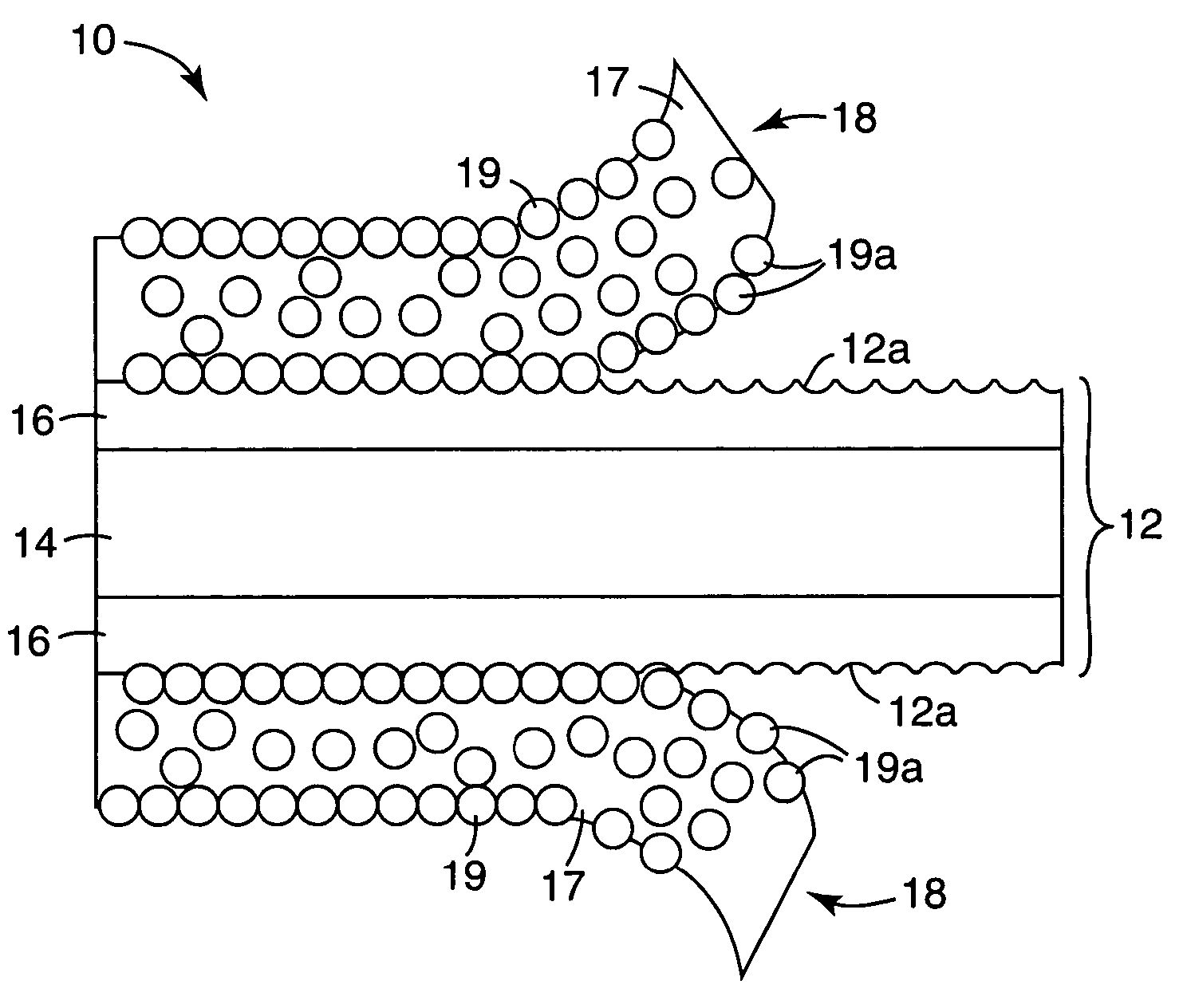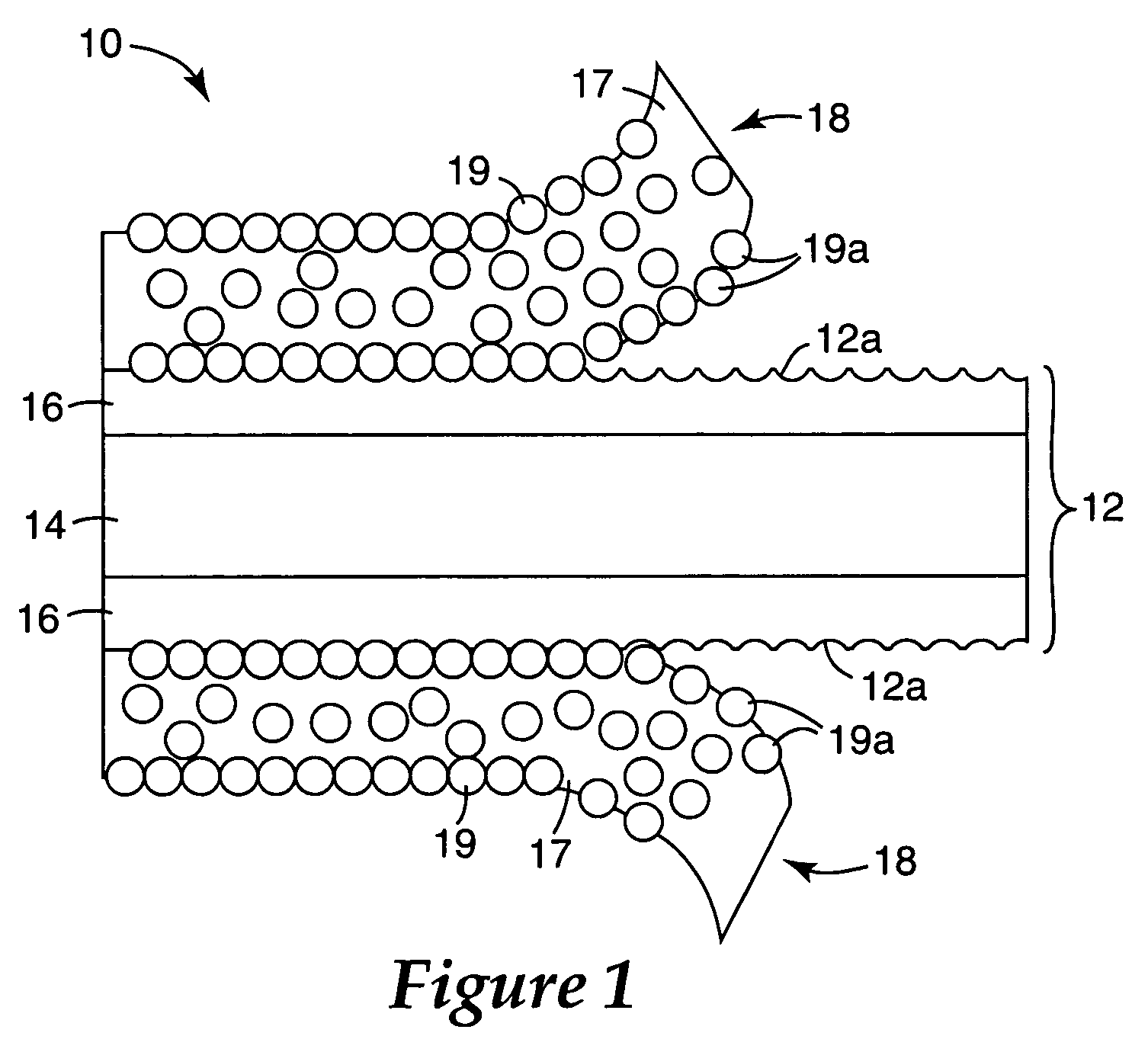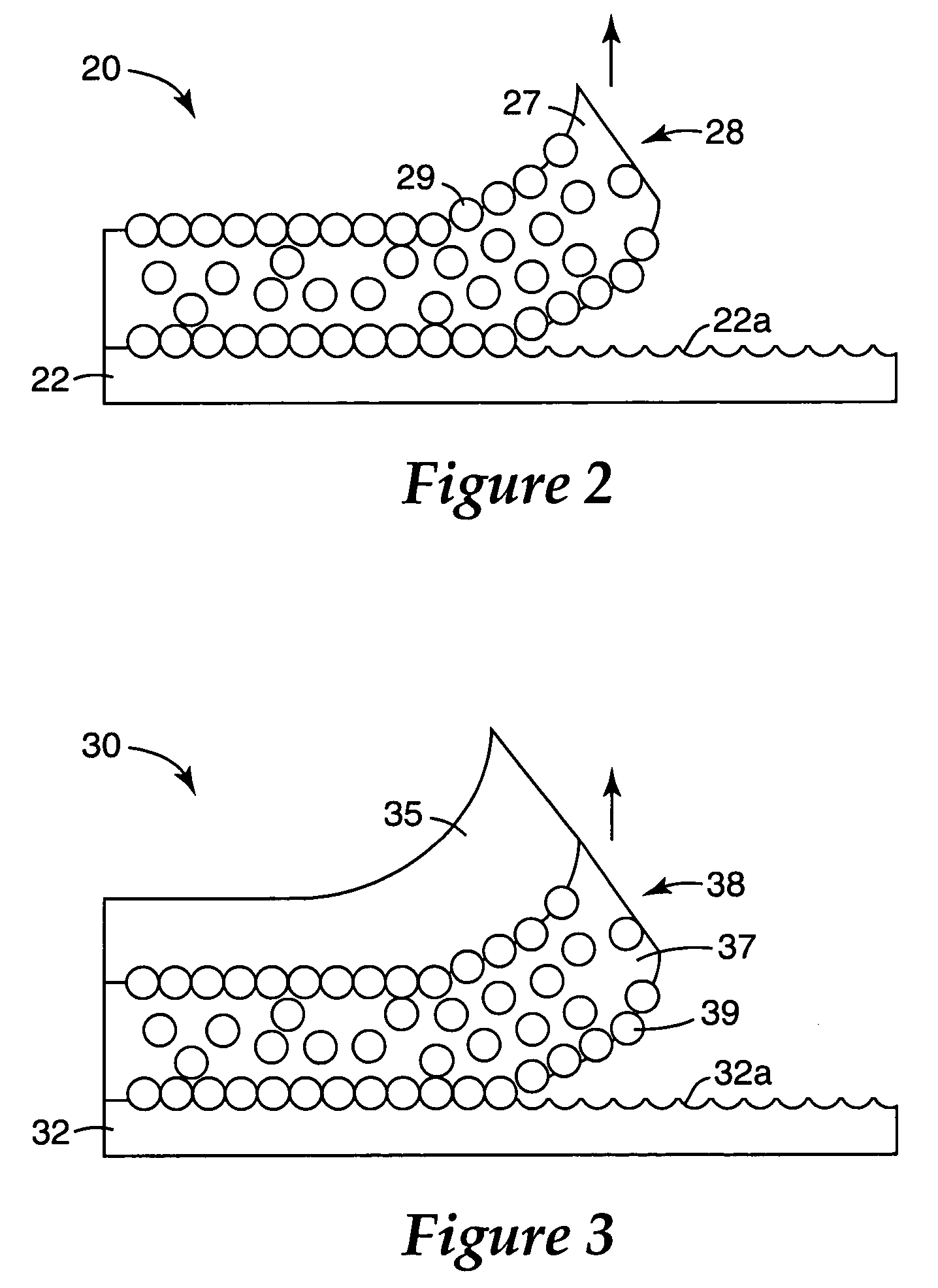Optical films incorporating cyclic olefin copolymers
a technology of optical films and copolymers, applied in the field of optical bodies, can solve the problems of significant dimensional instability, film formation of wrinkles, and dimensional instability also observed
- Summary
- Abstract
- Description
- Claims
- Application Information
AI Technical Summary
Problems solved by technology
Method used
Image
Examples
example 1
[0081] A three-layer, coextruded cast film was prepared, the general configuration of which is schematically illustrated in FIG. 4. The optical body 50 included a 1.5-mil-thick protective layer 54 of a glycol-modified polyester, Eastar 6763, from Eastman Chemicals. In this exemplary embodiment, the layers 54 and 58, function to prevent contamination or scratching of the adjacent surface of a norbornene-based cyclic olefin layer 52. Layers 54 and 58 also function as carrier layers for 52 in subsequent processing of the optical body, since some cyclic olefin copolymers are inherently quite brittle materials. The norbornene-based cyclic olefin layer 52 of the optical body 50 was a 2.0-mil-thick layer of Topas® cyclic olefin copolymer available from Ticona (Celanese). The norbornene-based cyclic olefin layer 52 also contained 0.25% of Palmowax® ethylene bis stearamide (EBS) lubricant from Acme-Hardesty, Inc. The rough strippable skin layer 58 of optical body 50 was a 1.5-mil-thick layer...
example 2
[0089] A three-layer, coextruded cast film was prepared, the general configuration of which is schematically illustrated in FIG. 4. The optical body 50 included a 1.5-mil-thick protective layer 54 of a glycol-modified polyester, Eastar 6763, from Eastman Chemicals containing 5% by weight of the same Topas® cyclic olefin copolymer that was used in Layer 52 of the construction. Layer 54 of the optical body 50 contained 5% by weight of the cyclic olefin copolymer material to modify the frictional properties of the skin layer 54. Coefficient of friction was determined for layer 54 in accordance with the procedures in ASTM D1894 using an I-MASS SP2000 slip-peel tester. For an unmodified layer of glycol-modified polyester, Eastar 6763, the coefficient of friction of the layer sliding over itself cannot be measured because the mechanism for sliding involves a stick-slip-type behavior. The sample sticks to itself until the sliding force builds to a high enough level to cause the test sled t...
example 3
[0094] In Example 3, the optical body of Example 1 was prepared exactly as described previously except that the lamination was accomplished using the pressure-sensitive adhesive composition of Example 2 instead of a curable resin adhesive composition. The brightness gain of this optical film prototype was 2.296.
PUM
| Property | Measurement | Unit |
|---|---|---|
| Haze | aaaaa | aaaaa |
| Haze | aaaaa | aaaaa |
| Haze | aaaaa | aaaaa |
Abstract
Description
Claims
Application Information
 Login to View More
Login to View More - R&D
- Intellectual Property
- Life Sciences
- Materials
- Tech Scout
- Unparalleled Data Quality
- Higher Quality Content
- 60% Fewer Hallucinations
Browse by: Latest US Patents, China's latest patents, Technical Efficacy Thesaurus, Application Domain, Technology Topic, Popular Technical Reports.
© 2025 PatSnap. All rights reserved.Legal|Privacy policy|Modern Slavery Act Transparency Statement|Sitemap|About US| Contact US: help@patsnap.com



